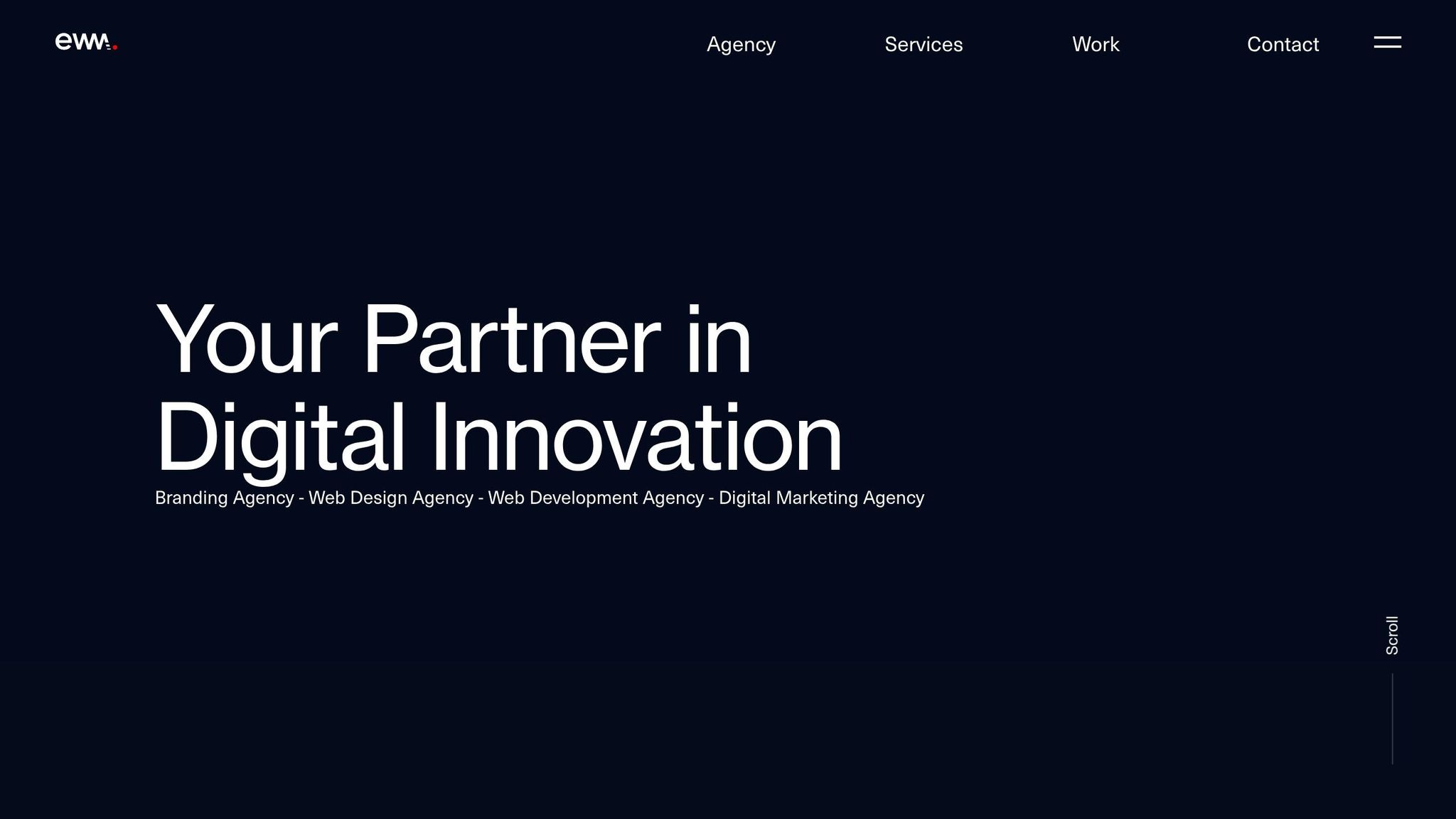
Architecture API-first: securing the investment of your digital platform
API-first Architecture: Secure Your Digital Platform Investment
API-first architecture is a method that places APIs at the core of . It allows for designing modular systems, accelerating deployments, and reducing the risk of failures. This approach is particularly useful for Swiss companies facing challenges such as multilingualism and strict regulations. Here are the key points:
- Simultaneous Development: Frontend and backend progress in parallel thanks to a central API.
- Flexibility: Targeted updates minimize interruptions.
- Security: Integrated measures from the design stage protect data.
- Swiss Compliance: Compliance with local standards like LPD and GDPR.
- Seamless Integration: Simplified connections with third-party tools and local systems.
With the rise of microservices and API calls (500 billion expected by 2027), this method is essential to remain competitive. In Switzerland, agencies like , based in Geneva, offer API-first solutions tailored to local and international needs. This strategy ensures a scalable, stable platform ready for the digital future.
Advantages and Key Principles of API-first Architecture
Modular Systems and Scalability
API-first architecture transforms your digital platform into a modular system composed of autonomous components. Each element can evolve independently, reducing the risk of disruptions for the whole.
For example, if your payment service needs to handle increased traffic during peak periods, you can adapt it without affecting your inventory management system or user interface.
"The API-first approach streamlines development, promotes collaboration, and fosters ."
– Stefana Zarić, Content Marketing Strategist [2]
This modularity also simplifies maintenance. You can make targeted updates to specific services without disrupting the overall operation of your platform.
Optimized Integration with Third-Party Tools
With an API-first architecture, integrating external tools and new technologies becomes smoother. This approach is particularly relevant in a context where over 1.7 billion active APIs are expected by 2030 [2].
For Swiss companies, this means simplified connection with local systems, such as payment gateways, regulatory compliance platforms, or advanced analytics tools. The API acts as a standard that facilitates these complex integrations.
Additionally, this architecture prepares your company for technological advancements. According to Gartner, by 2026, over 80% of companies will adopt APIs or AI generative-based models [3]. Compared to the monolithic approach, the benefits become evident.
Comparison between API-first and Monolithic Architecture
The differences between these two architectural approaches are particularly noticeable in terms of long-term investment and platform reliability.
| Criterion | API-first Architecture | Monolithic Architecture |
|---|---|---|
| Scalability | Component Scalability | System-wide Scalability |
| Integration | Standardized Connections | Complex and Rigid Integrations |
| Maintenance | Targeted Updates without Interruption | System Interruption for Modifications |
| Costs | Higher Initial Investment, Long-term Savings | Reduced Initial Costs, Expensive Maintenance |
| Flexibility | Rapid Adaptation to Market Changes | Heavy and Time-consuming Modifications |
| Security | Isolation of Failures and Layered Security | Risk of Problem Propagation |
API-first architecture stands out for its ability to isolate failures to specific services, thus avoiding major disruptions [2]. This resilience is essential to ensure service continuity, a particularly important aspect for Swiss clients.
Another strength is standardization from the outset. Unlike the monolithic approach, often a source of inconsistencies, API-first architecture ensures comprehensive documentation and consistency from the start [2]. This improves collaboration between teams and significantly reduces technical debt risks.
By adopting this method, you reduce maintenance costs while increasing your teams' ability to innovate effectively.
How to implement API-first development
Design and document APIs first
Before diving into development, it is essential to design your APIs. The so-called contract-first approach involves defining endpoints, data structures, and behaviors before writing a single line of code. This method ensures clear and consistent design from the start [7].
The first step is to set specific goals. Stakeholders need to identify how the API will address specific needs [5]. This step helps avoid costly misunderstandings later on.
Once the goals are established, a detailed technical specification must be written. This includes defining the necessary resources, data format and structure, relationships between resources, and available methods on each endpoint [5].
For documenting your APIs, tools like Swagger or OpenAPI Specification are particularly useful. They allow for producing comprehensive documentation, generating code, and testing your APIs based on the defined contracts [7]. Swagger is ideal for design and documentation stages, while Postman excels in testing and monitoring [6].
Before starting to code, test your choices by setting up mock servers capable of returning data examples [5].
"The contract-first approach offers significant benefits, including faster iterations, reduced time to market, and improved team collaboration, ensuring all stakeholders work consistently from a well-defined API contract." [7]
With these solid foundations, let's focus on building APIs that meet the specificities of the Swiss market.
Building APIs for Swiss Market Requirements
The Swiss market has its specificities, especially regarding multilingualism. This aspect must be considered from the design phase.
Christina Hammer, CEO of Clanq, a Swiss-German fintech application, shared a key lesson in a podcast in July 2025. She explained that using formal French without proper review led to a complete rewrite. To avoid such issues, her company reviews every design before development and uses a shared style guide among teams and partners to ensure consistent terminology [11].
"If it's not in your language, it doesn't look Swiss, it doesn't look secure." - Christina Hammer, CEO of Clanq [11]
This statement highlights the importance of localization for Swiss companies. Here are some practical strategies to integrate multilingualism:
- Integrate localization from the beginning, rather than adding it later [11].
- Focus first on a solid version in one language before translating it into others [11].
- For text-containing fields, provide metadata to determine the language and text direction [9].
- Implement a fallback logic suitable for Swiss specificities [10].
Also, adapt your APIs to Swiss formats for currencies, dates, numbers, and units of measurement. Finally, ensure that your designs include rigorous security measures to comply with local standards.
Security and Compliance Requirements
Security is a crucial pillar of the API-first approach, especially in Switzerland, where regulations are strict.
Companies must comply with the Swiss Criminal Code (CPP), the Federal Data Protection Act (LPD), and, if applicable, the EU's General Data Protection Regulation (GDPR) [8]. This involves implementing technical and organizational measures based on risk assessment to ensure data confidentiality, integrity, and traceability [8]. Non-compliance sanctions can reach CHF 250,000 [8].
A striking example is the ransomware attack on Xplain in May 2023. This company, which managed data for fedpol and OFDF, saw a large amount of personal data exposed on the darknet. The Federal Data Protection and Transparency Commissioner (PFPDT) concluded that Xplain, along with its partners, had failed to meet minimum security standards [8].
Since January 1, 2025, operators of critical infrastructures must report cyberattacks to the National Cyber Security Center (NCSC) within 24 hours [8].
To enhance security, companies should:
- Train their teams on cyber risks and best practices.
- Establish clear incident response plans.
- Conduct regular risk assessments.
- Engage external consultants if internal skills are lacking [8].
These steps not only minimize risks but also ensure compliance with Swiss regulatory requirements.
EWM SA API-first Development Services

User-centric API Development
EWM SA, based in Geneva, relies on an API-first architecture to optimize every project . By integrating design thinking principles, the agency prioritizes the user, ensuring a measurable return on investment.
Each project starts with a thorough analysis of end-user needs. This approach allows for designing APIs perfectly aligned with Swiss companies' expectations, whether they are local small businesses or large international organizations. The development process is based on modular and scalable logic, ensuring natural adaptability. From the design phase, robust security measures are integrated, such as security-by-design, with standards like OAuth and JWT [1].
Swiss and International Market Expertise
Since 2011, EWM SA has built a strong expertise in the Swiss market, considering its multilingual specificities and local characteristics. With offices in Geneva, Zurich, Paris, London, and Nice, the agency combines a deep understanding of local needs with a global perspective.
EWM integrates local formats like CHF, dates in dd.mm.yyyy format, and comma-separated numbers from the design stage of APIs. A bilingual approach (French and German) is also included to meet the expectations of the French-speaking and German-speaking regions. This involves effective management of multilingualism, including language metadata and a fallback strategy tailored to Swiss specificities.
For regulated sectors, especially finance, EWM integrates standards from the design stage. API-first architecture facilitates the implementation of essential features such as standardized authentication, consent management, and transaction security. These elements help meet the requirements of regulations such as PSD2, DORA, and Open Banking <